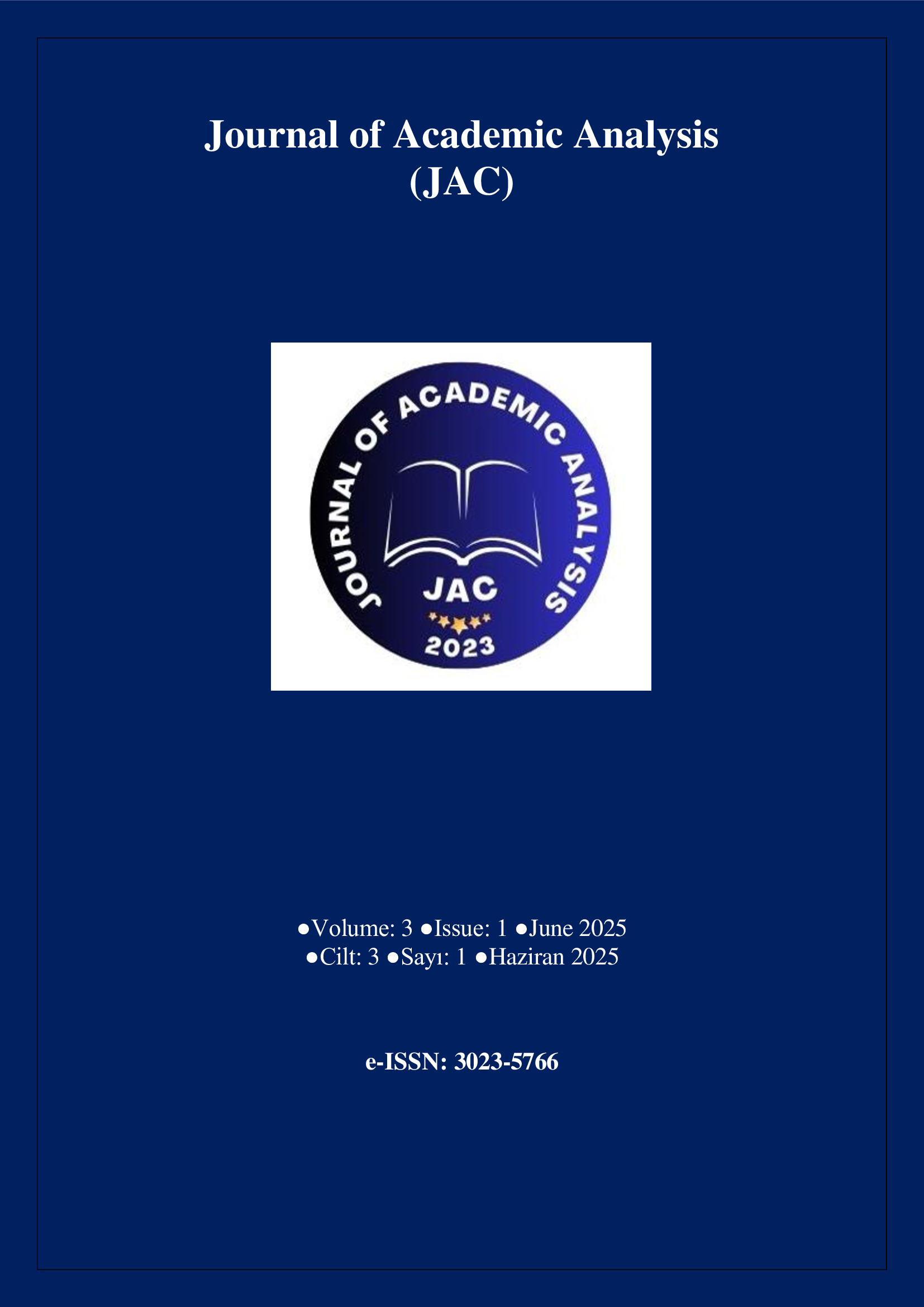The Trade Structure of Gold in International Commerce: Competitive Advantage, Import Intensity, and Functional Country Roles
Keywords:
International Trade, Gold, Trade StructureAbstract
This study aims to examine the trade structure of gold in international commerce by revealing the competitive advantages, import intensities, and functional roles of leading countries. Using Trademap data for the period 2015–2024, the top 20 countries in gold import and export were identified, and the Revealed Comparative Advantage (RCA) and Relative Import Advantage (RMA) indices were calculated. The findings indicate significant structural differences in gold trade among countries. Nations such as Switzerland, the United Arab Emirates, and Hong Kong stand out as processing and re-export hubs with both high RCA and RMA values, while countries like South Africa, Peru, and Ghana function as direct producers and exporters. In contrast, India and Türkiye display high import intensity, reflecting a final consumer economy profile. Based on a combined evaluation of RCA and RMA scores, countries were classified into four distinct functional trade roles, highlighting structural segmentation within the global gold value chain. The study argues that in the case of strategic commodities like gold, countries should be analyzed not solely based on trade volume, but also through their functional positioning within the global trade system. The results offer a valuable framework for policymakers and researchers in the design of international trade strategies.
References
Balassa, B. (1965). Trade Liberalisation and “Revealed” Comparative Advantage. The Manchester School, 33(2), 99–123.
Baur, D. G., & Lucey, B. M. (2010). Is gold a hedge or a safe haven? An analysis of stocks, bonds and gold. Financial review, 45(2), 217-229.
Baur, D. G., & McDermott, T. K. (2010). Is gold a safe haven? International evidence. Journal of Banking & Finance, 34(8), 1886-1898.
Bouoiyour, J., Selmi, R., & Wohar, M. E. (2018). Measuring the response of gold prices to uncertainty: An analysis beyond the mean. Economic Modelling, 75, 105-116.
Capie, F., Mills, T. C., & Wood, G. (2005). Gold as a hedge against the dollar. Journal of International Financial Markets, Institutions and Money, 15(4), 343–352.
Danna-Buitrago, J. P., & Stellian, R. (2022). A new class of revealed comparative advantage indexes. Open Economies Review, 33(3), 477-503.
Deodhar, S. (2023). Gold Is Old: Noble Metal in the Indian Economy Through Ages. Vikalpa, 48(3), 175-188.
Gereffi, G. (2005). The global economy: organization, governance, and development. The handbook of economic sociology, 2, 160-182.
Hausmann, R., Hwang, J., & Rodrik, D. (2007). What you export matters. Journal of Economic Growth, 12(1), 1–25.
Imbs, J., & Wacziarg, R. (2003). Stages of diversification. American Economic Review, 93(1), 63–86.
Jones, L., & Bethmann, E. (2023). Approaches of Measuring Revealed Comparative Advantage (RCA): Literature Review. US International Trade Commission.
Kannan, R., & Dhal, S. (2008). India's demand for gold: some issues for economic development and macroeconomic policy. Indian Journal of Economics and Business, 7(1), 107.
Kristoufek, L., & Vosvrda, M. (2014). Commodity futures and market efficiency. Energy Economics, 42, 50-57.
Laursen, K. (2015). Revealed comparative advantage and the alternatives as measures of international specialization. Eurasian business review, 5, 99-115.
OECD. (2022). Free Trade Zones and Illicit Gold Flows in Latin America and the Caribbean. OECD Business and Finance Policy Papers No. 08. OECD Publishing. https://www.oecd.org/en/publications/free-trade-zones-and-illicit-gold-flows-in-latin-america-and-the-caribbean_7536db96-en.html (Erişim Tarihi: 27.03.2025).
Panagariya, A. (2019). Free trade and prosperity: How openness helps developing countries grow richer and combat poverty. Oxford University Press.
Trademap (2025). Export and Import Data. https://www.trademap.org/Index.aspx. (Erişim Tarihi: 18.02.2025).
Türkiye İhracatçılar Meclisi (TİM). (2020). RCA 1000 Raporu: Rekabetçi Ürünler, Yeni Pazarlar. İstanbul: TİM Yayınları.
UNCTAD. (2021). Trade and Development Report 2021: from recovery to resilience: hanging together or swinging separately? https://unctad.org/press-material/unctad-trade-and-development-report-2021-recovery-resilience-hanging-together-or. (Erişim Tarihi: 01.03.2025).
UNCTAD. (2023). Revealed Comparative Advantage Radar Tool. https://unctadstat.unctad.org/EN/RcaRadar.html. (Erişim Tarihi: 15.03.2025).
Vollrath, T. L. (1991). A Theoretical Evaluation of Alternative Trade Intensity Measures of Revealed Comparative Advantage. Weltwirtschaftliches Archiv, 127(2), 265–280.
World Gold Council (2023). Gold Market Primer: The Global Role of Gold in Trade.
World Gold Council. (2022). Gold Outlook 2022: The relevance of gold in a new market regime. https://www.gold.org/goldhub/research/gold-outlook-2022. (Erişim Tarihi: 23.03.2025).
Yu, R., Cai, J., & Leung, P. (2009). The normalized revealed comparative advantage index. The Annals of Regional Science, 43(1), 267–282.
Downloads
Published
How to Cite
Issue
Section
License
Copyright (c) 2025 Journal of Academic Analysis

This work is licensed under a Creative Commons Attribution 4.0 International License.



